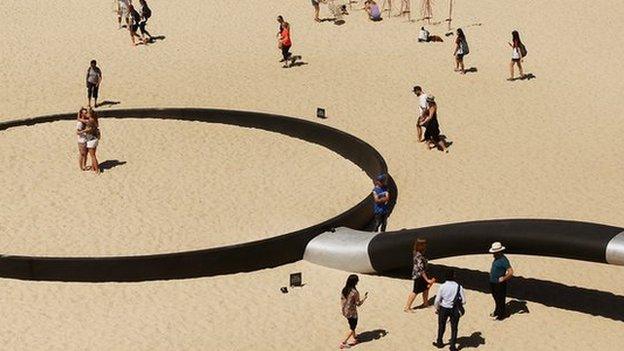South Australia fires: Hopes rise of halting Adelaide blaze
- Published
Firefighter Ben Wilson captured footage of the bushfires as they were being tackled
Firefighters tackling a large bushfire in South Australia say they are growing more confident they can contain it.
The fire has been raging across some 12,500 hectares (30,888 acres) of the Adelaide Hills since last Friday.
More than 100 people have needed hospital treatment, while at least 38 homes and 125 outhouses have been destroyed and livestock has died.
Extra fire crews have been brought in ahead of forecast high winds and temperatures above 38C.
But temperatures are expected to fall later in the week, with an increased chance of rain at the weekend.
The South Australian County Fire Service, external (CFS) said the fire - at Sampson Flat in the Mount Lofty Ranges, outside of the city of Adelaide - still had "hot spots with the potential to ignite unburnt ground".
CFS incident controller Scott Turner said it was now 85% contained, and that though conditions remained severe, they were not as bad as when the fire first broke out.

Officials said firefighters, many of them volunteers, were exhausted after a week of tackling the blaze
"We have in excess of 14 aircraft available to us should we see severe weather conditions this afternoon. We will move every asset we have available to protect our communities and to stop further fire spread," AFP news agency quoted him as saying.
South Australia's Premier Jay Weatherill praised firefighters, but warned against complacency.
"We know that we are in a dangerous phase where people get fatigued, where they might feel there is a false sense of security because what appears to be the worst is over," the Adelaide Now newspaper quoted him as saying.
"They make a bad decision like going into an area that's not safe or not being vigilant about structures or trees that are risks around them."
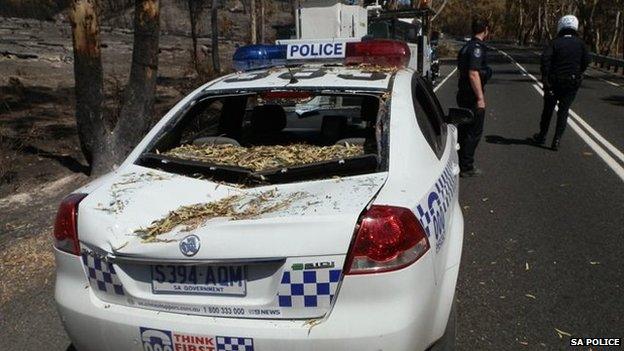
Two police officers narrowly escaped injury when a tree branch in a fire-hit area fell onto their patrol car, crushing the roof.
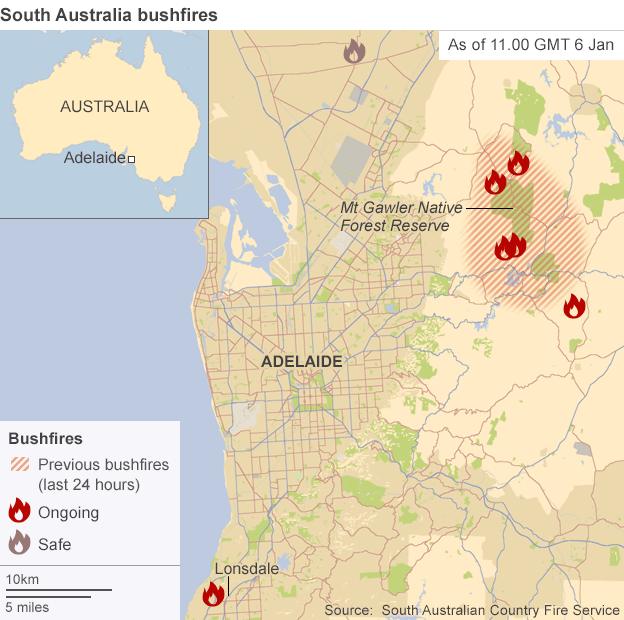
Australia faces bushfires every year. In 1983, more than 70 people died in a fire in South Australia and Victoria which destroyed thousands of homes and buildings.
In 2009, the devastating "Black Saturday" wildfires killed 173 people and destroyed more than 2,000 homes in Victoria.
But environmentalists say global warming is making bushfires more frequent.
The Australian Bureau of Meteorology said last year was the third hottest since national records began in 1910, with mean temperatures 0.91C above the long-term average.
But 2013 remains the warmest year on record, at 1.2C warmer than average, according to the bureau.
- Published6 January 2015
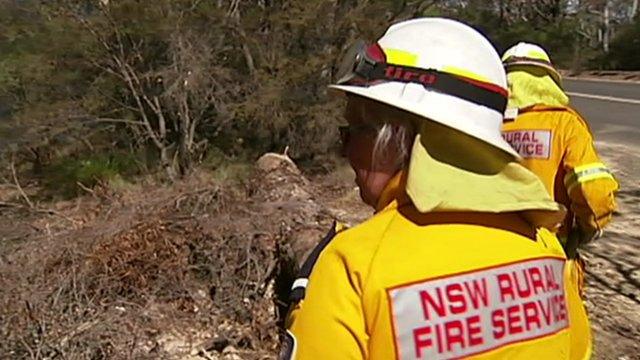
- Published6 January 2015
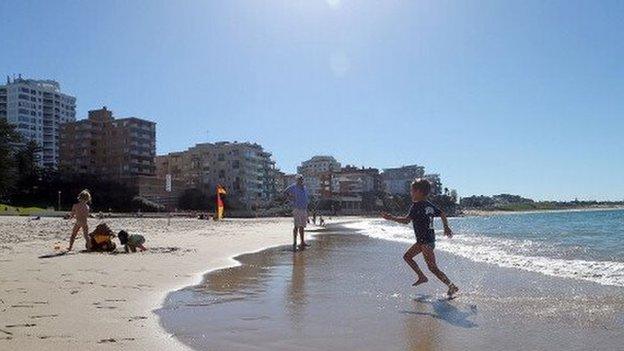
- Published30 November 2014
